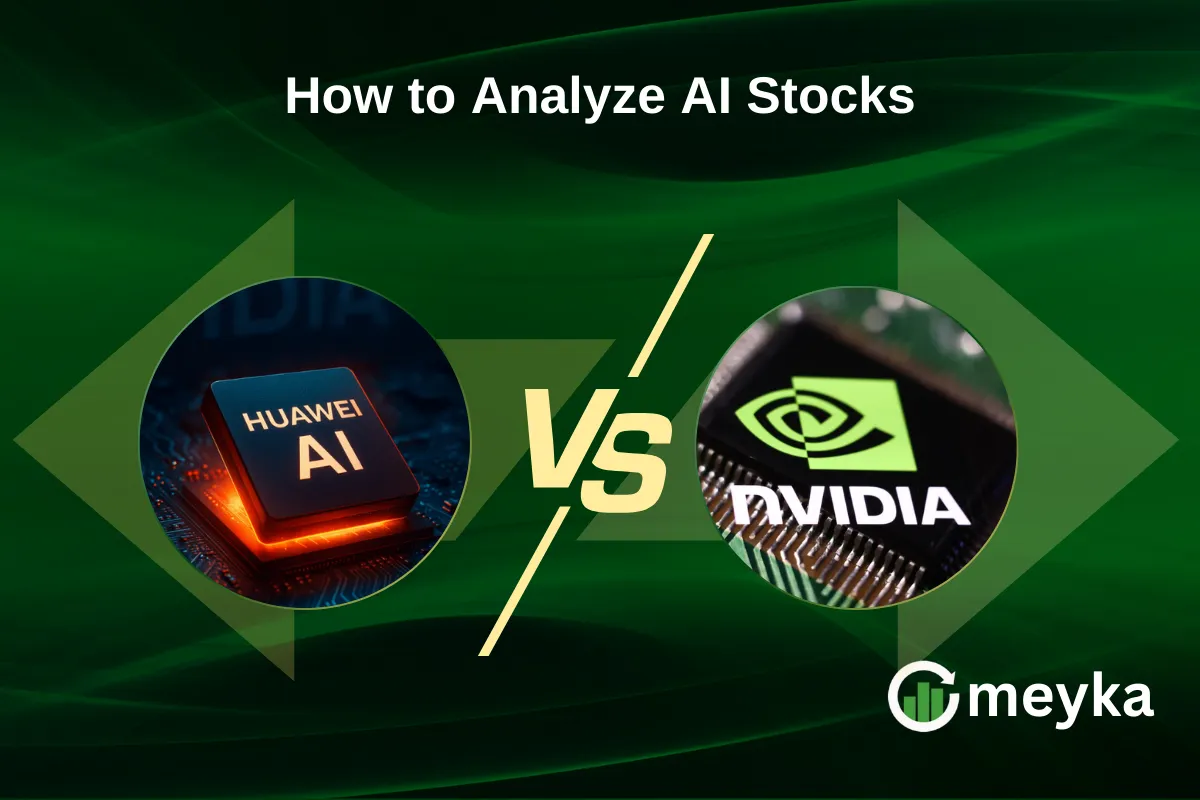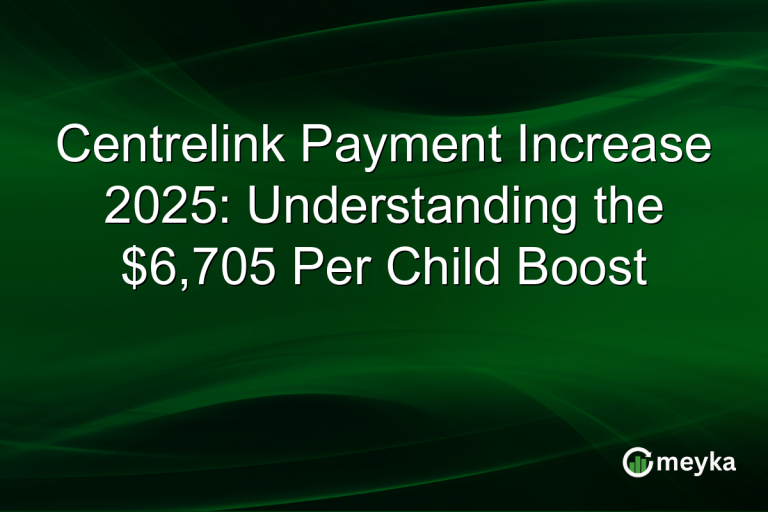How to Analyze AI Stocks: Guide for Investors
We know many investors feel both excited and uncertain about the rapid rise of artificial intelligence companies. The promise of AI is enormous, but not every business in this space will become a long-term winner. That’s why analyzing AI stocks requires more than chasing headlines. It demands a clear look at growth, profits, technology, competition, and risks. In this guide, we share how we evaluate companies shaping the AI revolution, from giants like Nvidia and Microsoft to fast-growing players like CoreWeave. Our goal is to give everyday investors a simple, structured way to understand opportunities and make smarter, more confident decisions.
We at MEYKA AI believe that investing in AI stocks is not just about riding a trend, it’s about understanding what makes certain companies strong, durable, and likely to succeed over time. We’ll walk you through exactly how we analyze AI stocks using real data, clear metrics, and examples so you can make smarter investment decisions.
What We Mean by Strong AI Businesses
We always begin by defining what “good” looks like in the AI world. We want companies that:
- Have real products or services using AI (not just promises).
- Show growth in revenue tied directly to AI or cloud/compute infrastructure.
- Maintain healthy finances so they aren’t just burning through cash.
- Possess something others can’t easily copy, whether it’s unique tech, data, or market position.
How We Look at Revenue Growth
We examine how fast companies are growing, especially in their AI or cloud segments. Fast growth often signals real demand.
Example: Nvidia
- In Q2 of its 2025 fiscal year, Nvidia’s data-center segment revenue rose by 154% year over year, reaching about $26.3 billion.
- Its overall quarterly revenue was up 122% YoY as demand for AI infrastructure surged.
Example: Microsoft
- Microsoft reported that Azure and its cloud segments achieved a year-over-year revenue growth of around 34% to $75 billion in some recent reporting periods.
We at MEYKA AI always compare those growth rates to peers, and also check whether they are accelerating or slowing.
Evaluating Profitability and Margins
Growth alone isn’t enough. We look at how much profit a company is making after costs, how large its operating expenses are, and where pressure might be (e.g., from hardware cost, R&D, supply constraints).
- Nvidia, despite huge growth, has had to manage margin pressures because the high costs of production of H20 AI Chip, chip supply, and energy are significant.
- We also check how cash flow looks: does the company generate free cash after spending on AI hardware, R&D, etc.? If not, high growth without profit can become risky.
Comparing with Competitors
We always place a company in its competitive environment. Some questions we ask:
- Who else is serving AI infrastructure, cloud, or chip supply?
- How much market share does the company hold?
- Are there new entrants or regulatory risks?
Example: Microsoft vs Nvidia
- Microsoft is very strong in cloud + software + AI tools (Copilot, Azure), which gives it diversified income.
- Nvidia dominates in hardware, especially GPUs for AI model training and inference. That gives it a leading infrastructure edge.
We compare financial metrics like growth rates, margins, debt load, and R&D spend so we see who is more resilient.
Why Technology Edge Matters
We at MEYKA AI believe that companies with a technological advantage often outperform. We check whether a company has:
- Unique chips or hardware designs or superior compute infrastructure
- Proprietary data or models
- Software tools, platforms, or ecosystems that lock customers in
Example: CoreWeave
- CoreWeave, a newer entrant in AI cloud infrastructure, has shown over 700% revenue growth YoY in 2024 — reaching ~$1.9 billion — by renting out GPU cloud capacity.
- It is backed by Nvidia and has deals with major clients like Microsoft. However, it also posted a large net loss (~$863 million in 2024). That tells us growth is strong but profit is still catching up.
Tracking Customer Adoption & Real Use Cases
We always ask: who is using their technology, and how? Are there large corporations, governments, or other weighty users? Are there contract renewals?
- Microsoft’s Azure cloud and AI tools (like Copilot) being adopted across enterprises gives us confidence in its recurring revenue model.
- Nvidia’s GPUs are used in supercomputers, data centers, and AI model training; that level of adoption shows the technology is not speculative.
Checking Financial Statements & Health
We dig into balance sheets, income statements, and cash flow. We want to see:
- How much debt the company carries
- Cash reserves and burn rate
- R&D expenses vs returns
- Operating margins and how they change
Example: CoreWeave again shows a strong revenue jump, but its net loss suggests we must watch when it can turn profits or at least reduce losses.
Identifying Key Risks
We at MEYKA AI never ignore risks. AI stocks often face:
- Supply chain constraints (e.g., chip production, export restrictions)
- Regulatory or geopolitical (e.g., trade bans, data privacy laws)
- High valuation bubbles, sometimes expectations are too high
- Market competition that might erode advantages
Example: Nvidia has to contend with export limits to certain countries, rising hardware production costs, and competition from other chipmakers.
Best AI Stocks Right Now (Based on Recent Data)
Here are companies we believe are among the top picks — not recommendations, but examples of what we consider strong in multiple areas:
| Company | Strengths | What We Like | What to Watch |
| Nvidia (NVDA) | Hardware, leadership in GPUs; huge growth in data-center revenue (≈ 100-150% YoY in recent quarters). | Technology edge, strong customer demand | Costs, supply constraints, and regulatory pressure |
| Microsoft (MSFT) | Strong cloud + AI tools, huge installed base, enterprise adoption; Azure growth of ~34%. | Diversification, recurring revenue | Competition, margins in low-growth segments |
| CoreWeave (CRWV) | Explosive revenue growth, niche in AI infrastructure; strong contracts with large companies. | High growth traction | Losses, high operating expenses, and exposure to capital costs |
We also monitor others like Oracle (cloud infrastructure forecasts increasing) and smaller players in AI infrastructure, model serving, and software tools.
Our Step-by-Step Method at MEYKA AI
When we evaluate an AI stock, we follow this process:
- Define exposure: How much of the company’s revenue is AI-related (directly or indirectly)?
- Trend analysis: Look at revenue growth over the past few quarters/years.
- Margin & profitability check: Operating margin, net margin, any losses, and how sustainable those are.
- Technology/moats: Unique tech, patents, data, partnerships.
- Customer & contracts: Size, diversity, renewal, dependency on a few large clients (risk).
- Balance sheet & cash flow: Debt, cash, R&D spending.
- Risk assessment: Regulatory, competition, valuation, and external shocks.
- Valuation & price expectations: Compare P/E, P/S ratios with peers; consider growth rate; decide if price is reasonable.
Looking Ahead: Long-Term View
We believe AI is a long game. Stock prices may fluctuate, but what matters is whether a company builds real value over time. We ask:
- Is this company innovating, staying ahead of others?
- Can it sustain growth and margins?
- Will customers remain loyal, or can rivals disrupt it?
When we invest (hypothetically) or recommend, we focus on businesses that pass many of these checks, even if they aren’t the cheapest in the short term.
Final Thoughts
We at MEYKA AI understand this may seem like a lot of moving parts. But by focusing on real data-growth, profit, tech strength, and risk, we believe investors can separate the hype from genuine opportunity.
If you want to start analyzing AI stocks, pick one company, go through our steps above, compare it to peers, and see whether your conclusions feel strong. Then track over time. Stay curious, stay disciplined, and let the fundamentals guide you.
Disclaimer:
This article is for informational purposes only and does not constitute financial advice. Investing in the stock market involves risks, including the potential loss of principal. Always conduct your own research or consult with a financial advisor before making investment decisions.






